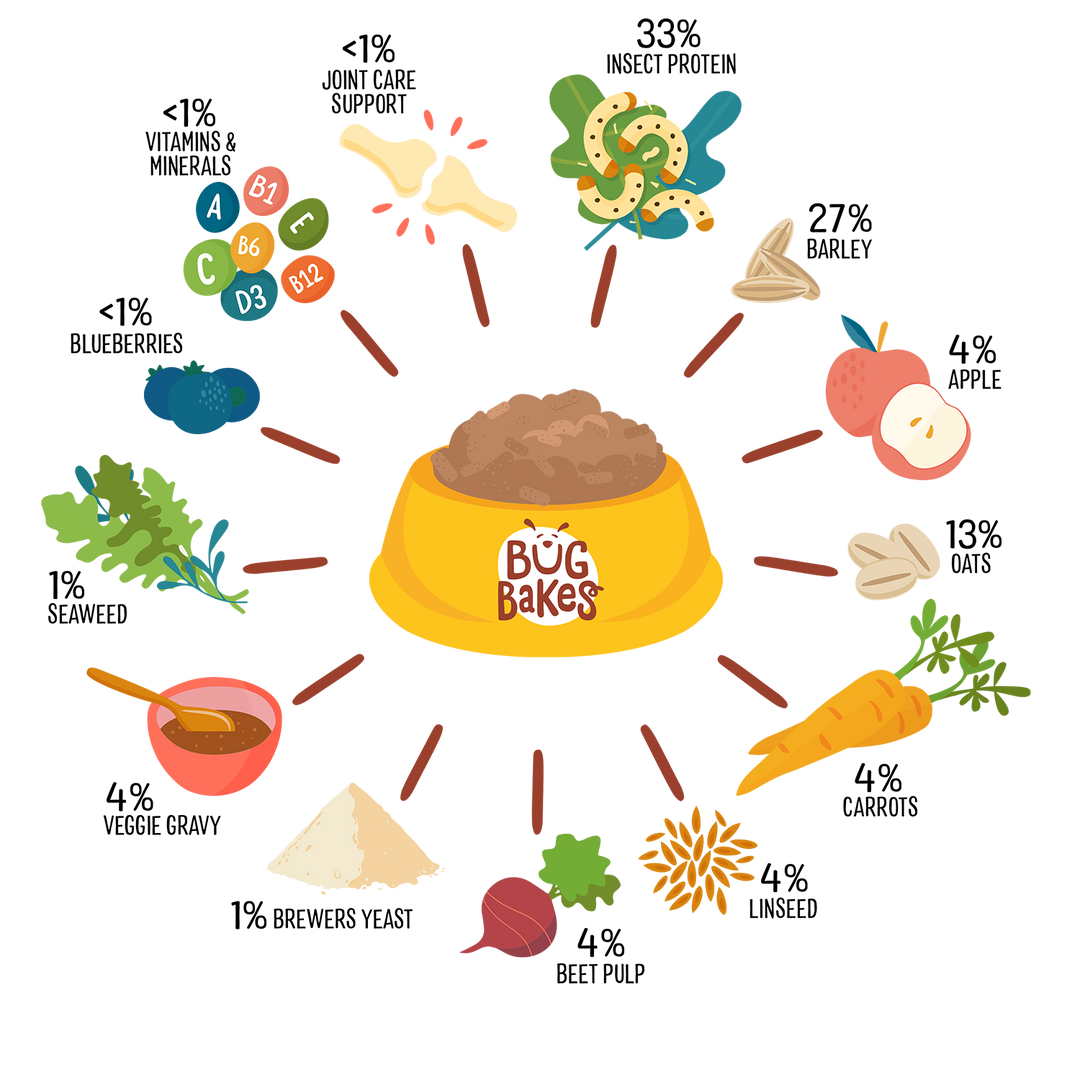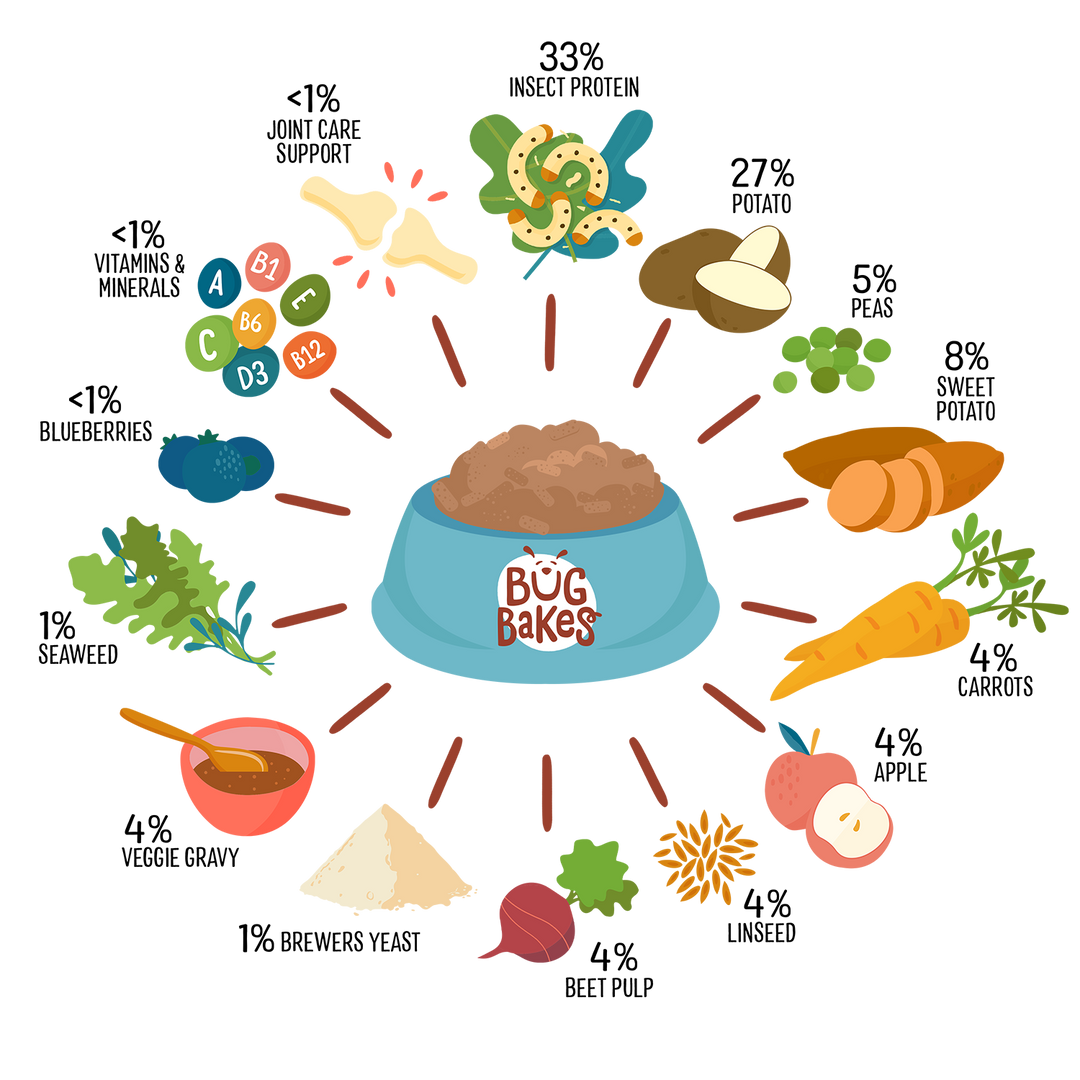Hypoallergenic Dog Food
Choosing an anti-allergenic dog food is the best way to help your furry friend. If your dog suffers reactions from typical kibble, a hypoallergenic dog food removes this issue, looking after your pup stress-free.
Our hypoallergenic food for dogs and puppies is loaded with protein, carbohydrates, fibre and vitamins, meaning that you can get all the advantages of allergy-free dog food without compromising your pooch’s health.
Discover Our Range
View all
Ethical

Environmentally-Friendly

Vet-Approved

Hypoallergenic

Subscribe & Save

Delicious

Protein-Packed

Nutritional Raw-Alternative

Cold-Pressed in the UK
Testimonials
What is Hypoallergenic Dog Food?
It's food specially formulated to minimize allergic reactions, a common problem for many furry friends. This means happier skin, a healthier coat, and less worry for you!
If your dog suffers from allergies, traditional food can trigger itchy skin, upset stomachs, and endless scratching. Our hypoallergenic formula eliminates common allergens, giving your dog the relief they deserve.
Does Your Dog Suffer From Food Sensitivities?
Many furry friends experience discomfort after eating certain foods. But what's the culprit: allergy or intolerance? Understanding the difference is key to keeping your pup happy and healthy.
- Allergies - Trigger the immune system, causing potentially severe reactions even to tiny amounts
- Intolerances - Involve the digestive system, leading to milder discomfort
The good news? Our revolutionary hypoallergenic dog food caters to both allergies and intolerances. It delivers complete nutrition without risking an immune or digestive response.
Give your dog the gift of lasting comfort and a wagging tail with our premium hypoallergenic food.

How you can Avoid Adverse Reactions
Avoiding adverse allergic reactions and keeping your dog happy and healthy is simple. Firstly, carry out an allergy test on your dog to understand its specific needs. Then, choose our hypoallergenic dry dog food to minimise the risk of a reaction whilst also giving your best friend the required protein, fibre, essential vitamins and carbohydrates to support their digestive health.
Essential Nutrients for a Hypoallergenic Dog Diet
Keeping your dog healthy can often be challenging. We love our pets and always want to give them everything to live full lives. That includes crucial nutrients that we may not consider. Your dog needs:

Protein
Essential for growth, protein is central to a dog’s diet. Plus, it includes amino acids that contribute to maintaining healthy hair and skin and repairing muscle damage.

Fibre
Soluble and insoluble fibres promote digestive health, decreasing issues like gas and increasing the number of nutrients absorbed by the intestines and used to keep your dog fit and strong.

Vitamins
Vitamins are essential in our diets, but they are also essential for your dog’s hypoallergenic diet. Vitamin E promotes immune system health, and Vitamin A is vital for hair growth and skin protection.

Carbohydrates
Carbohydrates are a dog’s primary source of energy. But unfortunately, they can trigger allergic reactions. That’s why finding new carbohydrates helps create hypoallergenic dry dog food and keep your pup happy and healthy.
Spotting a Reaction
Understanding the symptoms of an allergic reaction ensures you can identify one occurring and seek veterinary support to protect your dog. Here are the common signs:
- Itchy skin
- Red rashes, particularly on paws, ears, stomach, face, chin and groin
- Swelling around the face, eyelids, lips, ears or ear flaps
- Diarrhoea
- Vomiting
- Excessive wind
- Lethargy
- Weight loss
- Aggression
- Hyperactivity
What Goes into our Hypoallergenic Puppy and Dog Food?
We are proud to have created a unique hypoallergenic low-fat dog food recipe packed with the goodness your dog needs. Here are the nutritional facts and our ingredients:
Protein 28%, Fat 11%, Fibre 5%, Ash 7%

Regular Food:
- Insect - 33% (28% meal, 5% oil)
- Barley - 27%
- Oats - 13%
- Apple - 4%
- Carrot - 4%
- Linseed - 4%
- Beet Pulp - 4%
- Seaweed - 1%
- Chicory Root Extract
- Vegetable Gravy - 4%
- Blueberries
- Glucosamine 400 mg/kg
- Chondroitin 200 mg/kg
Grain-Free Food:
- Insect 33% (28% meal, 5% oil)
- Potato 27%
- Sweet Potato 8%
- Peas 5%
- Apple 4%
- Carrot 4%
- Linseed 4%
- Beet Pulp 4%
- Vegetable Gravy 4%
- Minerals
- Vitamins
- Brewers Yeast 1%
- Seaweed 1%
- Blueberry
- Prebiotic MOS
- Chicory Root Extract
- Glucosamine 400 mg/kg
- Chondroitin 200 mg/kg

Suitable For
Our hypoallergenic food for puppies and dogs can be with your pooch for life as it is suitable for any dog over two months old. That includes:

Puppies

Working Dogs

Seniors
FAQ
How to change dog foods without making my dog ill?
To prevent illness, you should gradually transition between diets. Start by introducing 25% of the new dog food for a day. Then increase in 25% increments across a week until you have changed the diet.
What commonly causes allergies and itchy skin in dogs?
There are many things your dog can be allergic to, including fleas, food and their environment. Typically, dog food allergies are caused by beef, chicken, milk, eggs, soy, wheat or corn.
How do dog food allergies and intolerances differ?
Allergies are immune system reactions to certain foods, whereas intolerances are digestion reactions.
What are the different symptoms of a dog food allergy and intolerance?
The symptoms of allergies and intolerances are similar, though they are typically milder with intolerances. You should look out for the following:
- Diarrhoea
- Excessive wind
- Vomiting
- Swelling around the face, eyelids, ears, lips and ear flaps
- Red rashes on the skin, especially near the tummy, groin, face, chin, paws and ears
- Weight loss
- Extreme tiredness or activity
- Aggression



